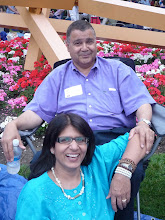Faith and belief play a strong role in shaping the rituals surrounding birth, marriage, and death. In my small city observing and participating in the rituals of a funeral presented itself on one clear Monday morning in October.
On my way to work six weeks ago, I waved nonchalantly to two of my colleagues standing by the side of the road near the entrance to the side door to my office, deep in conversation probably related to the newly torn up earth where a new roadbed was being laid. Across the window of my ground level office, in a different direction I could see a crowd gathering. In the early hours of the morning a citizen, struggling to recover from a debilitating stroke had died. This was not a good start to the day.
A little after noon, I went over to one of the offices to see if I there was anything I could do as my colleagues were standing looking very distraught. One of my two colleagues I had waved to earlier in the morning was dead – of a heart attack! Not knowing the proper Macedonian words to express my shock and grief and uncertain of the sequence of events, I suspended the English lesson that I teach to my colleagues. Soon knowing that no other work could be done, they started to leave for home, after a collection was made for a donation to the family of the deceased.
Next morning my friend took me under her wing and took me to the deceased’s home early in the afternoon. I entered the living room to find my colleague’s body lying in a coffin, surrounded by flowers and gift boxes of candy and chocolates. Beside him was a temporary aluminum tray filled with tiny earth-colored pebbles and a stack of church candles. I placed a small donation and lit a candle in his memory. I was asked to sit down along with the other mourners and offered a small glass of Rakia (a local alcoholic drink), followed by one piece of candy. I partook both as instructed by my friend prior to entry.
As additional mourners entered the room, I went and waited outside. Shortly afterwards a procession formed outside the apartment building, led by young children holding flowers in their hands, followed by high school children. The priest went ahead of the hearse, his wife and children. His extended family, friends, colleagues and townspeople followed behind, some in cars, though most of us walked about one km to Sveti Bogodorica, the Eastern Orthodox Christian church. Only the family and coffin were taken inside the small church, while we waited outside for the completion of this phase of the service. After about 20 minutes, the procession started towards the cemetery. This path went past the new home that was being built by the deceased and it was a heart-rending poignant moment for all to hear the anguished sounds of the family when they passed the home that would never be occupied by the husband and father to two teenagers, whose life had come to a sudden end.
At the cemetery the open coffin was placed on two sturdy 2x4’s spanning the open ground and prayers were said. The wife and children then placed a newspaper and other favorite articles of clothing before covering the face with the shroud and closing the coffin. The 2x4’s were removed and coffin lowered into place on two sturdy ropes that were removed once it settled on the ground. The priest put the first symbolic piece of dirt in the wife’s hand and she threw it on the coffin, followed by the children and close family, then friends, colleagues, neighbors, townspeople, etc.
The lunch was preceded by a sip of Rakia, which was consumed by first pouring a little bit to the ground (symbolic inclusion of the deceased), followed by a spoonful of boiled whole wheat grain and finally a small piece of blessed bread, a bit of both were saved by the side of the plate. After the meal, as we left the cemetery, we dropped the piece of bread behind us, without turning around to keep the spirits following into our homes.
Last Friday, six weeks after the death of my colleague, another collection was made and I learned that another service was to be held. Once again we gathered at the deceased home and walked behind a procession led by the priest and the family, but this time directly to the cemetery. Candles were passed to the mourners at the gravesite, which were lit during the prayers and snuffed out upon completion and returned to the church. This was followed by a meal and we partook of the same rakia, whole wheat and blessed bread before the meal. At both meals we were given plastic bags and as the sweets and savories were served, each of us took a piece and placed it in the bag to take it back home with us.
I apologize for any errors of understanding, but from now on every year on January 7 (Christmas day of the Eastern Orthodox Church, the date on the Gregorian calendar which corresponds to December 25 on the Julian calendar) all the townspeople who have lost a family member will once again prepare food and go to the cemetery, laying the plates on the gravestones. Mourners will come and light one candle and take a snack (usually in a bag) –symbolic of sharing a meal with the family member who is living in another world, unseen but there with the family on this day.

















